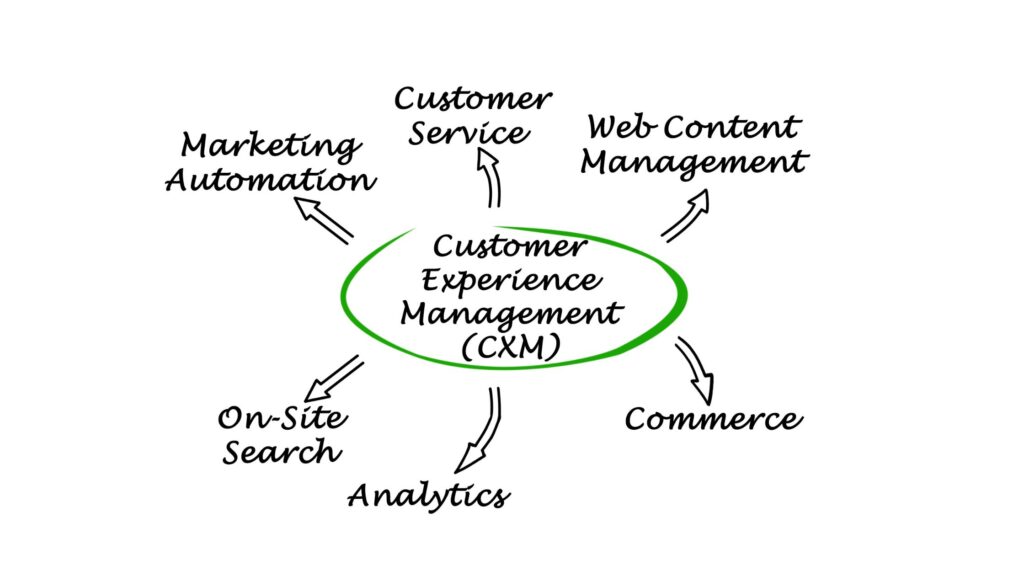
Stages of CRM Implementation: From Planning to Full Team Adoption
You’ve heard about companies doubling their sales after implementing a CRM system. Teams are getting a complete view of their customers. Marketing and sales departments are actually talking to each other.
These wins make CRM systems sound like a silver bullet for business growth. But here’s what many businesses don’t realize: nearly one-third of CRM projects face implementation challenges.
The CRM market is growing fast—it’s projected to hit $128.97 billion by 2028. Despite all the investments and promises, many organizations find it challenging to unlock their full potential. They spend months on planning, spend thousands of dollars on software, invest weeks in training their teams, and still find their new CRM system underutilized.
It’s understandable—CRM projects involve several moving parts, and every stage requires thoughtful coordination.
Let’s take a deep dive into these challenges and how to address them.
Where do teams often run into challenges?
Many CRM challenges arise when businesses jump headfirst into software selection. They get excited about features, comparing pricing plans, and immediately start thinking about integrations. But they skip the foundation work that actually determines success.
Companies that succeed with their CRM implementation do something different. They start with strategy, not software. They know what they want to achieve before they start shopping. And here’s the interesting part—89% of successful organizations now prioritize AI capabilities when choosing their vendor. This isn’t just about keeping up with trends. It’s about understanding that CRM has become strategic.
This guide walks you through the stages of CRM implementation—from planning your strategy to getting your entire team to actually use the system. Because what separates success from struggle isn’t the software you choose. It’s in how you implement it.
1. Define your CRM strategy and goals: First step in the stages of CRM Implementation
You know CRM implementation matters, and you’ve seen the statistics. But here’s where many businesses encounter their first challenge: they skip straight to vendor demos and feature comparisons. Successful CRM projects start differently. They begin with a simple question: What specific problems are you trying to solve?
Understanding the early steps of CRM implementation ensures your strategy aligns with your long-term goals rather than just the software features.
1.1 Clarify what CRM means in business
Your customer data lives everywhere. Sales reps keep notes in their personal folders. Marketing runs campaigns from one platform while customer service uses a completely different system. When a client calls with a question, your team scrambles through multiple databases just to understand their history. This fragmentation limits forecasting accuracy and makes it harder to plan. CRM fixes this by organizing, automating, and synchronizing customer data into one central location.
1.2 Identify pain points and desired outcomes
Before you can fix anything, you need to know what’s broken. Most businesses discover similar patterns:
- Customer data is scattered across different systems
- Sales and marketing teams are working with different information
- No visibility into customer interactions between departments
- Missed opportunities because follow-ups fall through the cracks
- Generic communication that doesn’t match customer needs
This is one of the critical CRM implementation stages that determines how effectively your business can address operational gaps before deployment. It’s common to face these overlaps—recognizing them early makes the next stages far smoother.
1.3 Set measurable business objectives
A goal like “Improve sales” is too broad—effective CRM objectives work best when measurable.
Real CRM objectives vary from one business to another. For some, it might be reducing response time by 30%. For others, it could be increasing customer retention by 15%. It differs across organizations, and that’s exactly why every CRM looks different. Each business should shape its system around unique goals, priorities, and processes that define its success. Every feature you configure, every workflow you design, and every training session you plan should align with these measurable goals to ensure your CRM delivers real business impact, not just another tool that ends up underused.
2. Choose the right CRM and prepare your team

You’ve defined your strategy. You know what you want to achieve. Now comes the part where many businesses face their next challenge – choosing the right CRM. Selecting the right platform is one of the most crucial stages of CRM implementation because it directly impacts adoption and scalability.
2.1 Evaluate CRM platforms based on your needs
We know that your business isn’t like every other. Your sales processes may have specific steps. Your customer service team handles unique challenges. Your marketing team uses particular tools. Start with your actual requirements, not the feature list. Because every business operates differently, what works for others may not suit you. Ask yourself:
- Integration capabilities: Can it connect with the tools your team already uses?
- Scalability: Will it grow with your business?
- Security: How does it protect your customer data?
- User-friendliness: Will your team actually use it?
The best CRM aligns with how your team already works.
2.2 Build a cross-functional implementation team
CRM projects need representatives from every department. Your implementation team should include:
- A dedicated project manager who owns the timeline and keeps everyone focused.
- Subject matter experts from each affected department.
- Technical specialists who understand how systems connect.
- Most importantly, find your internal champions.
Having a diverse implementation team ensures alignment across all CRM implementation phases, reducing friction during rollout.
2.3 Create a change management plan
Your change management strategy needs to address this head-on:
- Explain the “why” behind the implementation.
- Design training for specific roles, not generic audiences.
- Create feedback loops to catch issues early.
- Track engagement with real metrics, not just login counts.
Here’s a reality check: Approximately 38% of CRM projects face adoption challenges because nobody planned for human behaviour. When people feel included in the process, they’re far more likely to embrace new systems with confidence.
3. Implement and configure your CRM system – Core Stages of CRM Implementation
This is the stage where you’ve done the planning, chosen your platform, and your team is now prepared to begin implementation. Now you’ve reached the implementation phase, where your strategy begins to take shape and translate into measurable outcomes. This is where you discover if your planning was thorough enough, if your team is truly prepared, and if your chosen CRM can actually deliver on its promises.
This is the most critical point in the CRM implementation process, because the configuration, the data, and the integrations determine the future success of your business. Here’s what separates successful implementations from projects that encounter setbacks.
3.1 Customize workflows and features
At this point, it’s tempting to tailor everything—but balance is key. Your first instinct might be to rebuild your entire business process inside the CRM. But instead of doing that, you would want to begin by configuring existing features because they’re designed to cover most core processes and help your team adapt faster.
When you’re setting up your CRM:
- Start with standard fields and workflows before creating custom ones
- Build dashboards that show your most critical metrics first
- Set up user permissions that match how your team actually works
- Test each change with real users before moving to the next feature
Small, steady progress here ensures stronger stability later.
3.2 Migrate existing customer data
This is the stage where things often start to get complicated. Data migration isn’t just about moving information from one system to another—it’s about ensuring that every record stays accurate, complete, and usable.
Most teams rush this step and move everything as-is. Smart businesses do it differently.
- First, they clean their data before moving it.
- Next, they map out exactly how data fields will translate from the old system to the new one.
- Finally, they test the migration with a small batch of data first.
Data work takes patience—this is where precision matters more than speed.
3.3 Integrate with existing tools and systems
Your CRM doesn’t exist in isolation. It needs to integrate with your existing tools—like marketing platforms, accounting systems, communication tools, and support software—to ensure seamless data flow and productivity. Integration streamlines workflows and helps teams stay efficient. For example, when a new lead fills out a form on your website, it should automatically appear in your CRM. Or when a customer sends a support email, your service team should be able to see their full history without switching systems.
The goal isn’t just convenience. It’s to create a unified view of every customer, lead, and prospect across your entire business.

3.4 Test the system before launch
Effective testing covers four critical areas:
- Data accuracy after migration—do customer records look complete and correct?
- User interface for each team member—can people actually find what they need?
- Performance under real workloads—does the system slow down with multiple users?
- Integration with all connected systems—do automated workflows actually work?
Testing will ensure stability before full deployment across all stages of CRM implementation.
4. Train users and drive full team adoption
Perfect systems don’t guarantee success. People do — and the right training ensures everyone feels confident using the CRM. In many cases, this is where most CRM projects slow down.
4.1 Develop a CRM training plan.
Generic training can kill the CRM adoption phase faster than bad software. Successful CRM training starts with understanding that different roles need different approaches.
To break this cycle, you can create role-specific training that shows immediate value. For example:
- Video tutorials for visual learners who want to see exactly how features work
- Hands-on workshops where people can practice with real scenarios
- Written guides that they can reference when they get stuck
Encouraging peer learning can also strengthen user confidence.
4.2 Use in-app guidance and walkthroughs
The best training happens inside the system itself. These tools can reduce onboarding time by up to 50% while cutting basic support tickets by 83%. Interactive tooltips, step-by-step tutorials, and contextual help can help remove the guesswork.
4.3 Encourage feedback and iterate
Your team knows what they need to do their jobs effectively. To encourage them, you can create feedback loops through user forums, focus groups, or regular surveys. More importantly, it is crucial to act on what you learn. When feedback turns into visible improvements, user trust grows naturally.
4.4 Monitor user engagement and adoption rates
You can’t improve what you don’t measure. To turn that insight into action, track login frequency, feature usage, and data quality to understand how people actually use your CRM. If ever you spot low adoption in specific areas, you have the ability to design targeted training based on real usage patterns, not assumptions. This stage completes the cycle of transformation—adopting these steps effectively will render your CRM a part of daily success and not just a side tool.
Conclusion
Every business evolves, and along with it, so should its systems. This calls for a CRM that unifies customer data, automates workflows, and provides real-time insights for smarter decision-making.
Microsoft Dynamics 365 delivers exactly that — a single, intelligent platform that connects your sales, marketing, and service operations, giving you a complete 360-degree view of every customer. As a certified Microsoft Dynamics 365 Implementation Partner, Metadata Technologies helps organizations plan, deploy, and adopt CRM solutions that drive measurable business outcomes.
Contact us today to implement the right Microsoft Dynamics 365 CRM solution for your business and make the most of every stage in your CRM implementation journey.


 Apr 19, 2022
Apr 19, 2022



 12:00:39am
12:00:39am 
